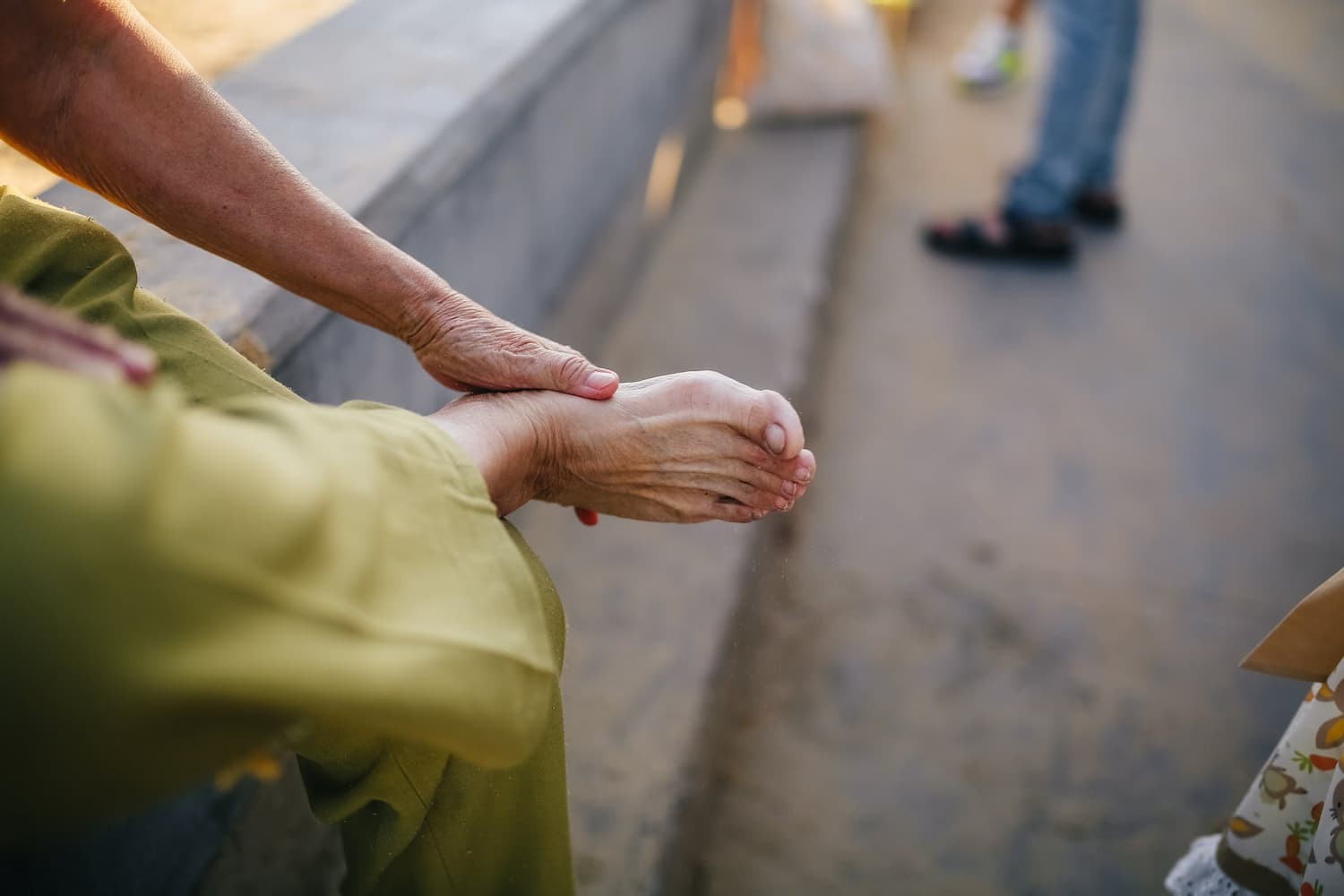
People with bunions have different stories to share about the visible bump situated in the joint of their big toe. Some of them suffer from moderate bunions, while others experience severe pain from the bony protrusion. The history of bunions varies from person to person; some are born with them, others develop a bone infection, and still others blame it on ill-fitting shoes. Learn everything there is to know about this joint deformity, including proper bunion assessment and foot care, to help people with bunions improve their quality of life.
What is a Bunion?
A bunion is a protruding section of the big toe's base, or a bony bump, that causes the big toe to lean towards the second toe. It's one of the most common foot deformities, next to flat feet, that causes foot pain and discomfort. It's often caused by an inherited condition called hallux valgus that causes your big toe to jut out toward the second toe, placing pressure on the joint and causing it to enlarge over time. The development of bunions is more common in women, especially those who wear high heels or tight shoes. Bunions can be painful if they rub against shoes, but they don't usually cause long-term damage unless untreated.
Symptoms of Bunions
A bunion formation usually only affects one foot at a time, but bunions share similar symptoms regardless of which foot is affected. You may start to notice pain around the affected areas such as the ball of your foot, which becomes worse when wearing narrow shoes. Bunions often cause a burning sensation in the soles of your feet too. While the severity of the symptoms varies from person to person, the majority of sufferers commonly experience the following:
- Continued pain around your big toe joint which becomes worse when wearing ill-fitting shoes
- Swelling, redness and stiffness in your big toe joint
- Restricted movement in your big toe joint
- Corns and calluses on the affected toe
- Pain on the outside of your foot at the base of your big toe where it meets your foot
If you notice any bunions developing, you should consult a healthcare professional, preferably a podiatrist. Ignoring them only makes bunion pain worse in the long run.
Source: Visual.ly/midtownpodiatrynyc.com
Causes of Bunions
Most bunions develop gradually over time due to genetics, but bunions can also develop after a joint injury or joint disease such as arthritis. Because bunions can run in families, it's worth checking to see if you have any family members who have bunions, unusual foot shapes, larger than usual foot bones, plantar warts, or other foot conditions like flat feet. If you discover that they do, it may be helpful to consult a qualified healthcare provider to obtain the proper foot care.
Even without a family history of bunions, some people are just more susceptible to developing bunions than others. Other risk factors include obesity, high heels and standing for long periods of time.
There is no specific reason known that causes bunions to develop. However, they may be caused by an imbalance between the three muscles that move the toes: the extensor digitorum brevis, abductor hallucis and flexor digitorum brevis. These muscles attach to the bones of the big toe and help it bend as well as control how far it can move out, in and up. If any one of these three muscles becomes tight or shortened, it is more likely that bunions will occur.
Treatment Options for Bunions
Untreated bunions don't go away on their own; bunion pain worsens over time, making walking difficult. When this happens, bunion surgery becomes inevitable. It's a good thing that there are a variety of nonsurgical treatments available for bunions. The most common are custom orthotics, such as bunion splints, which are wrapped around your foot to align your toes.
Your podiatrist can also prescribe bunion-friendly shoes specially designed to either reduce the effects of bunions or correct them entirely. Other forms of treatment include special bunion socks, padded shoe inserts or bunion pads.
Although medications may be prescribed for severe bunions, natural treatments are just as effective as medical treatment in treating a painful bunion. Here's a list of some conservative treatments you can do at home to address bunions without surgery:
- Soak your water in warm water and Epsom salts.
- Apply an ice pack to the painful area.
- Wear comfortable footwear, preferably one prescribed by a foot specialist.
- Physical therapy can reduce pain in the big toe and increase its mobility.
- Maintain a healthy body weight to avoid putting too much pressure on the affected toe.
- Do foot exercises on a regular basis, such as picking up small objects from the floor with your toes.
How to Prevent Bunions in the First Place
There are many things you can do to prevent bunions from forming, and they don't have to cost a fortune. Wearing shoes that fit properly and evenly distribute weight across your feet is one of them, as is avoiding walking barefoot or in sandals as much as possible and avoiding standing for long periods of time.
It's also important to avoid foot injuries, which can contribute to bunions. This includes avoiding activities such as running on hard surfaces and wearing proper safety equipment when participating in sports such as football or soccer. Another thing to remember is to avoid smoking because it affects the flow of blood through your body. Bunions will worsen over time if left untreated, and it may require surgical removal. If that is something you do not want to go through, then prevention is key.










